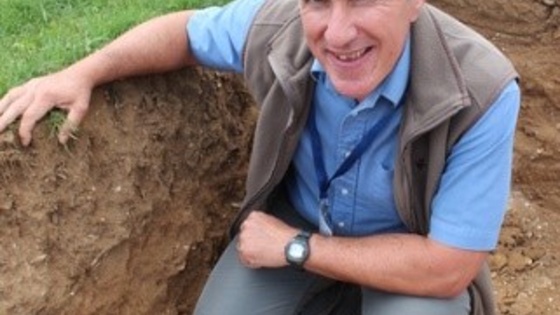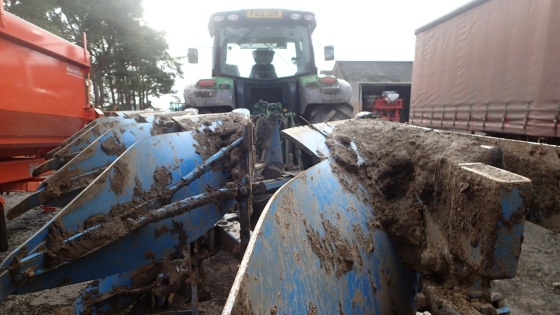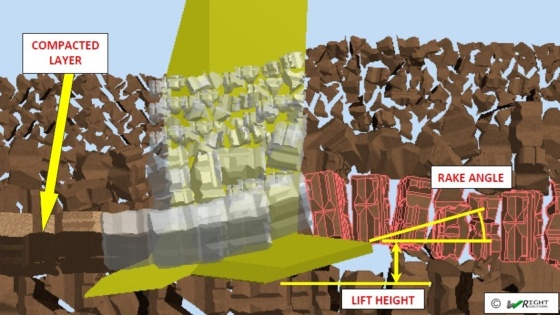Cultivation Principles - Italian rye-grass
Italian rye-grass is prevalent in non-inversion tillage systems. It germinates in uncultivated stubble in the presence of light. Most seed germinates in the autumn (94%) so leave seed on the surface and spray off with glyphosate prior to drilling.
Conventional and Strip Tillage (establishment) techniques are appropriate when considering this weed. Note detailed comments on establishment.
As germination is predominantly in the autumn delaying drilling until October/November can significantly reduce populations.
Shallow cultivations may place the seed into darkness where secondary dormancy can develop. The seedbank is not long-lived (2-3 years) so there is little benefit from cultivations stimulating buried (old) seeds to germinate.
Seeds buried below 6cm (for example by ploughing) will be prevented from emerging.
A two year fallow should virtually deplete the seedbank.

Cultivation Principles
Our Expert
Philip Wright
Philip Wright was trained in agricultural engineering at Silsoe College, Bedford, gaining an Honours Degree in 1979. He became registered as a Chartered Engineer with the Engineering Council in 1990, and is a member of the Institution of Agricultural Engineers, the American Society of Agricultural and Biological Engineers and the British Society of Soil Science. Philip was technical director of Simba International (now Great Plains), the UK leading manufacturer of cultivations machinery, having been employed there since 1979.
As part of the BASF panel of Arable Weed Control experts, Philip will advise on cultivations and drilling techniques specifically targeting the control of various key weeds, for example how they respond soil disturbance, where the weed seed bank needs to be for best control [inverted/buried, or in the upper zone of maximum residual herbicide efficacy], plus the ideal scenarios for effective control – delayed drilling, spring cropping, other cultivations and residue/canopy management options, ideal cropping rotation sequences, etc.

Ploughing - If shallow tillage has been generally used, a plough pass will help to give a 'clean start' and allow future season shallow operations to be most effective. Ploughing is the preferred method to control this weed if high populations exist if ploughing fully inverts and buries the surface seed bank. Plough to a depth of 15/20cm. Repeated ploughing should be avoided the following year. Effective burial by
1. Suitably narrow furrow width (30/35cm on heavier soils) and share width < furrow width for an effective “hinge”
2. Sensible forward speed
3. Appropriately set skimmers
4. Post plough pressing to close the surface
5. Pre-cultivation before ploughing if needed - shallow mixing of residues plus surface consolidation so soil/straw contact of the buried residues allows efficient breakdown and good rates of water movement through the profile.
Maintain seed bank horizons by controlled surface disturbance of any prior operations. Loosening only as needed if greather than plough depth should be by low rake angle winged tines with adequate lift height for conditions and depth worked. This controlled vertical fissuring also minimises disrupting the weed seed bank horizons. On heavy soils where deeper loosening is needed, provided conditions are suitably dry for fissuring, this operation could be left until after ploughing. Pressing when loosening will help to achieve the following seedbed, and a suitably low surface disturbance lifting action will avoid bringing buried residues and weed seeds back to the surface which is ESSENTIAL.
AT ALL COSTS avoid: i) deep, non-inversion mixing; (II) re-inversion by a second ploughing within a 5 year period; (iii) failure to consolidate after soil disturbance as this will lose moisture and adversely affect germination potential of the following crop.

NOTE: Effective loosening is vital where structure is likely to reduce or inhibit moisture infiltration levels. Poor drainage reduces competitiveness of the following crop. Consider headlands and the main field areas separately where loosening is needed as in many cases loosening depths are different, or not required across the whole field.
AT ALL COSTS avoid:
1. Deep non- inversion mixing
2. Re-inversion before 5 or more years
3. Lower depths of disturbance when cultivating than during follow-on spring drilling
4. Failure to consolidate after soil disturbance as this will lose moisture and adversely affect germination potential of the weed seeds

